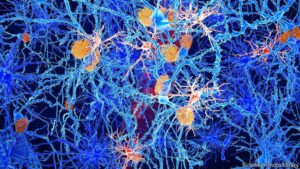

This is an important story. For those who have an interest in science and scientific research I highly recommend that you read the article from Science. It reads like a gripping detective story, but is quite chilling.
I had been aware that there was controversy about the role of amyloid plaques in Alzheimer’s research. But last summer a whistleblower found flaws in the original study showing certain proteins in amyloid plaques (Aβ*56) as being the cause for Alzheimer’s disease. The original study identifying Aβ*56 was in 2006. It appears that the original images had been doctored to fit the hypothesis. This is a sad story that emphasizes the pitfalls in the incentives in academic research. Not only is there pressure to publish, but there is pressure to publish dramatic results. There is no glamour and little money for reproduction of experiments. The tragedy here, is that billions of research dollars have been spent on developing drugs to target these proteins as a cure, and there have been no successes. That is how research and drug development go but it starved other hypotheses from being granted research money. Other approaches might have led to a potential cure.
The fast tracking of Aduhelm has been a part of this story. (I posted about this travesty at the time.) The researcher who found the doctored images was also skeptical of Aduhelm.
I’m not sure how we change research incentives. Often obscure research findings in niche areas of research end up being key to major breakthroughs. And frequently, the breakthrough is dependent on lots of different research studies. To give glory to the researcher who puts in the final piece of the puzzle is misguided.
For those who would rather listen to this story, there was a good segment on “On The Media” here.
This story was written up in Science, and you can find that article here
Hundreds of clinical trials of amyloid-targeted therapies have yielded few glimmers of promise, however; only the underwhelming Aduhelm has gained FDA approval. Yet Aβ still dominates research and drug development. NIH spent about $1.6 billion on projects that mention amyloids in this fiscal year, about half its overall Alzheimer’s funding. Scientists who advance other potential Alzheimer’s causes, such as immune dysfunction or inflammation, complain they have been sidelined by the “amyloid mafia.” Forsayeth says the amyloid hypothesis became “the scientific equivalent of the Ptolemaic model of the Solar System,” in which the Sun and planets rotate around Earth…
“So much in our field is not reproducible,[meaning redoing experiments is very costly] so it’s a huge advantage to understand when data streams might not be reliable,” Schrag says. “Some of that’s going to happen reproducing data on the bench. But if it can happen in simpler, faster ways—such as image analysis—it should.” Eventually Schrag ran across the seminal Nature paper, the basis for many others. It, too, seemed to contain multiple doctored images…
But even before Schrag’s investigation, the spotty evidence that Aβ*56 plays a role in Alzheimer’s had raised eyebrows. Wilcock has long doubted studies that claim to use “purified” Aβ*56. Such oligomers are notoriously unstable, converting to other oligomer types spontaneously. Multiple types can be present in a sample even after purification efforts, making it hard to say any cognitive effects are due to Aβ*56 alone, she notes—assuming it exists. In fact, Wilcock and others say, several labs have tried and failed to find Aβ*56, although few have published those findings. Journals are often uninterested in negative results, and researchers can be reluctant to contradict a famous investigator.
An exception was Harvard University’s Dennis Selkoe, a leading advocate of the amyloid and toxic oligomer hypotheses, who has cited the Nature paper at least 13 times. In two 2008 papers, Selkoe said he could not find Aβ*56 in human fluids or tissues…
As federal agencies, universities, and journals quietly investigate Schrag’s concerns, he decided to try to speed up the process by providing his findings to Science. He knows the move could have personal consequences. By calling out powerful agencies, journals, and scientists, Schrag might jeopardize grants and publications essential to his success.
But he says he felt an urgent need to go public about work that might mislead the field and slow the race to save lives. “You can cheat to get a paper. You can cheat to get a degree. You can cheat to get a grant. You can’t cheat to cure a disease,” he says. “Biology doesn’t care.”

